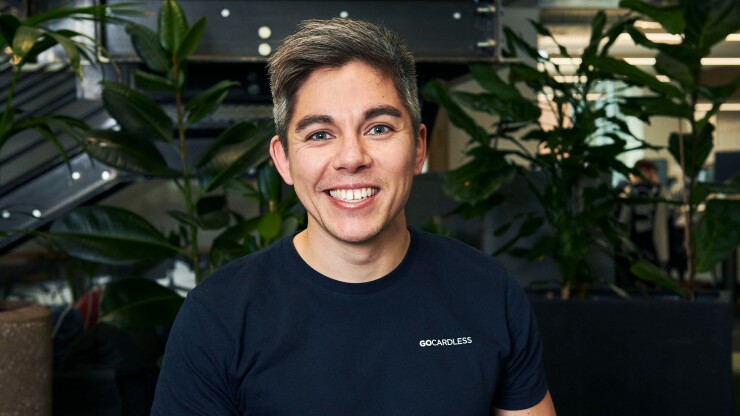GoCardless, which has the eponymous goal of prying people and businesses away from credit and debit cards, is moving deeper into data-sharing technology through a deal to purchase Nordigen.
The London-based GoCardless is buying Nordigen, a Riva, Latvia-based open banking data company. While GoCardless has been building open banking products for some time, the acquisition is its first foray into powering the underlying technology that supports the sharing of data between banks and third parties.
"We didn't think we'd get into open banking connections. But there is more to do with that tech layer," said Hiroki Takeuchi, co-founder and CEO of GoCardless. "Open banking is similar to an Uber-type experience, where you can use the app for a lot of other things. There's a huge amount of data in your banking app."

Financial terms of the deal, which is expected to close this summer, were not disclosed. It comes as open banking, which is generally defined as connections that allow consumers or businesses to access accounts from multiple providers, matures and becomes more competitive.
That maturation will push new open banking deployments to address specific challenges for both consumers and businesses, such as managing risks for
"Open banking is still a little way from mass adoption. But we are seeing encouraging signs of people using open banking even when they are not aware they are using it," said Jacob Morgan, a principal analyst at Forrester Research.
More businesses and consumers are using financial services enabled by open banking connections to manage their budgets or to simplify how they are accessing financial apps offered through third parties, Morgan said. And while most early open banking deployments have focused on consumers, the technology is being increasingly applied to businesses, covering B2B and B2C transactions, according to Morgan.
GoCardless will integrate Nordigen's open banking connectivity with its account-to-account network, building upon GoCardless's existing open banking initiatives. Nordigen will enable GoCardless to add more data and speed to credit assessments, for example.
At American Banker's Digital Banking Conference, experts discussed the benefits and budding regulatory efforts around increased data sharing among banks and fintechs.
It will also add new payment types such as variable recurring payments. A VAP payment provider makes a series of repeat payments within a pre-agreed range on a client's behalf, funded by the client's bank account and connected to the service providers by an application programming interface. VAP is considered a use case for small businesses that pay multiple suppliers regularly for services or products that have costs that change in a predictable range. It's also a way for households to manage, track and pay utility bills, mortgages and similar expenses more accurately.
"There is a lot of complexity involved in being able to collect payments," Takeuchi said. "Open banking streamlines those rails in a more direct way, but it has not been widely used in that manner."
GoCardless positions itself as an alternative to traditional card rails, supporting account-to-account (A2A) payments in a time where merchants are outspoken in their criticism of
GoCardless is competing against fintechs that have also caught on to the
"Open banking has become more than making a payment," Morgan said. "The market is shifting from point solutions that enable an account dashboard to something that's broader."
Over the past 18 months GoCardless has added support for real-time payments. It has also introduced a service that uses account information services (AIS) to vet identity and combat transaction fraud.
GoCardless' core market is the U.K. and the European Union, though it is
Open banking as a concept has existed for more than a decade, though it has accelerated due to the PSD2 guidance, which applies to Europe but has also
"When we first started the company [in 2011], open banking was just being created," Takeuchi said. "We kept an eye on it and felt it would be big for us, but the reliability of the technology wasn't there. We were waiting for the right time for the tech to be ready."






